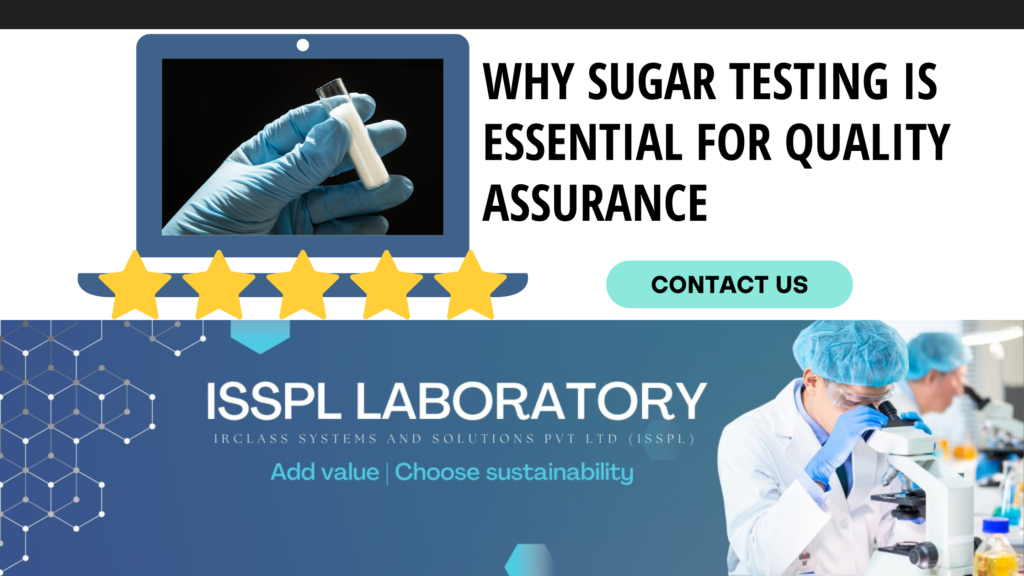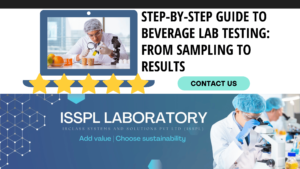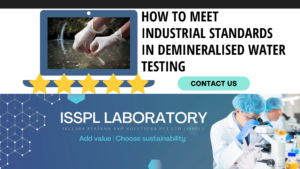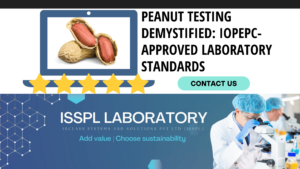An Overview by Team ISSPL - Analytical Testing Laboratory in India
ToggleQuality assurance is the bedrock of consumer trust and product success in food, and beverages. Sugar is one of hundreds of ingredients that are used in the production process, and often a crucial touchpoint between tasting good texture, and preservation qualities — to look great.
This is why maintaining the quality of sugar and its products must be a priority for the credibility of our final product; This blog will cover why sugar and sugary product testing is indispensable for quality assurance, various tests are carried out at every stage of the process along with how it affects consumer satisfaction as well brand image.
Importance of Sugar in Food Production
Not only as a sweetener, but sugar also has several functions during the production:
Taste: The sugar provides a base upon which the flavors of ingredients, namely fruits and botanicals can come alive.
Tender and Chewy Mouthfeel: Sugar aids in controlling the texture of some baked goods, lending a softness to cakes and cookies.
Fermentation: With products such as bread and beer, sugar is necessary for fermentation to take place which yeast is fed by it hence assisting with the leavening process.
Given these critical roles, any variation in the quality of sugar can significantly impact the final product’s quality, making rigorous testing essential.
Key Aspects of Sugar Quality
The quality of sugar and related products depends upon several factors, all distinct from one another but are to be strictly monitored and controlled:
Purity: The purity of sugar is the biggest concern. They deteriorate the quality of the end product in terms of taste, texture, and long-term stability due to impurities that include ash, moisture, and nonsugar substances.
Color: Fraction which measures the level of refinement, in ICUMSA (International Commission for Uniform Methods of Sugar Analysis) units. Additionally, the darker colors of sugar due to impurities will also affect product appearance and flavor.

Types of Tests Conducted on Sugar and Sugar Products
- Purity Tests:
This method uses polarimetry to determine the amount of light each degree of rotation causes when passing through a sugar solution in contrast with water, and this value is indicative of sweetness. Purity tests are necessary for assessing sugar quality. The Ash content test is used to examine mineral content and lesser ash indicates a purer sample.
- Color and Appearance Tests:
Color and appearance are very important in sugar quality tests. The ICUMSA Color Test determines the color of sugar. The lower the ICUMSA value, the higher the degree of refinery quality and purity. This visual inspection also shows that the sugar is consistent in color and free from any other particles, making it further conform to quality checks.
- Granulation Tests:
Tests are very important in granulation to make constant good sugar. The Particle Size Distribution test will tell you the spread of particle size present in a sugar sample. This test can help keep your granulation uniform, texture consistent, or dissolution rates even throughout the final product. Sieve Analysis also supports these claims by sieving sugar granules into various sizes with a series of meshes that keep the product formulation and segmentation homogeneous.
- Moisture Content Tests:
Moisture content tests are of great importance as well to prevent the sugar quality and shelf life. And in the Karl Fischer Titration method, it is a very accurate way of measuring sugar moisture levels that need to be low enough not only so the product doesn’t clump but also for extended shelf life. In support of this, the Loss on Drying (LOD) Test can measure rapidly and with a high level of accuracy how much moisture is lost when heating up sugar thus indicating its stability and storage potential.
- Microbial Tests:
Microbial testing services are important for the protection of sugar items and chain cleanliness. The Total Plate Count (TPC) simply determines total viable microorganisms in a food sample, the lower the TPC value will be an indicator of good hygienic practice and product safety. Yeast and Mold Counts are tested to determine the presence of yeast & mold which could cause sugar spoilage as well add health risks to consumers. We do this for food safety, continues Ncube–this testing helps keep the sugar clean and safe to eat.
Testing in Quality Assurance Process
Sugar is about more than just meeting regulatory specifications; the quality of every batch, in sugar production, must consistently be world-class. And that is where testing comes into play. Manufacturers can test with rigor to:
- Maintain Product Consistency: A uniform quality of sugar means consistency in the taste, texture, and appearance of your product every time. This is critical for Never Not On Time, particularly as the Apprell division must instill confidence in its products from both a brand loyalty and consumer trust perspective.
- Adhere to Regulations: There are stringent regulations concerning sugar and its products in many countries. Manufacturers must adhere to these standards by regularly testing out the materials used so as not to be penalized or have their products recalled.
- Boost Brand Reputation: The better the products, the happier your customers and hence a solid brand reputation. Certainly a major differentiator in the food industry competition.
Effect of Good Quality Sugar on Consumers.
While consumers may not always know the ins and outs of what quality control has gone into bringing their favorite products to market, they certainly can discern it with each bite. Quality sugars are vital to ensuring that food products have the proper level of sweetness, texture, and shelf life. Every product from a moist, chewy cookie to an unspoiled jar of jam stands or falls on the sugar it contains.
Further, with consumers seeking to ascertain the source of their food and its quality now more than ever before, this transparency could have longer-term benefits in terms of brand loyalty. Share that they are extensively tested and quality-controlled; helping to gain trust in the market!
Conclusion
Quality control is a key issue of the food processing process and sugar determination in raw materials, intermediate products or final products plays an important role as far as taste, texture, and safety profile are concerned.
With purity, color granulation, moisture levels, and microbial tests which ensure that a manufacturer can prove their product is of the same quality with each production run, they also benefit from increased customer satisfaction.
While the food industry continues to develop, it is clear rigorous testing may be even more important in ensuring product quality; In addition to these quality assurance processes, collaborating with a trusted testing facility like ISSPL Lab can help you ensure that all products meet regulatory requirements and standards.







